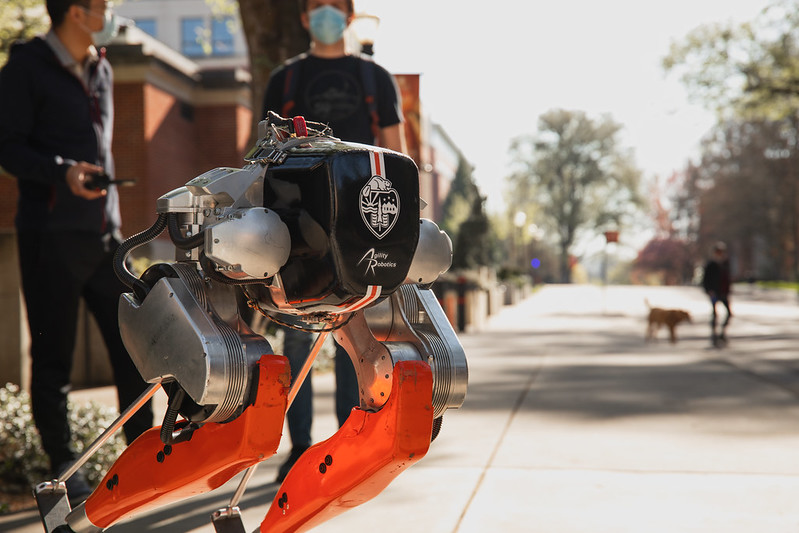A bipedal robot, developed at Oregon State University and produced by spinout company Agility Robotics, has used machine learning to control a running gait on outdoor terrain, enabling it to complete a 5K.
The robot, named Cassie, was developed under the direction of robotics professor Jonathan Hurst with a 16-month, US$1m grant from the Advanced Research Projects Agency of the U.S. Department of Defense.
Since Cassie’s introduction in 2017, OSU students funded by the National Science Foundation have been exploring machine learning options for the robot.
Cassie traversed the 5km route on Oregon State’s campus untethered and on a single battery charge, in just over 53 minutes.

“The Dynamic Robotics Laboratory students in the OSU College of Engineering combined expertise from biomechanics and existing robot control approaches with new machine learning tools,” said Hurst, who co-founded Agility.
“This type of holistic approach will enable animal-like levels of performance. It’s incredibly exciting.”
According to the team, the bipedal platform features knees that bend like an ostrich’s, taught itself to run with a deep reinforcement learning algorithm. Running requires dynamic balancing – the ability to maintain balance while switching positions or otherwise being in motion – and Cassie has learned to make infinite subtle adjustments to stay upright while moving.
“Cassie is a very efficient robot because of how it has been designed and built, and we were really able to reach the limits of the hardware and show what it can do,” said Jeremy Dao, a Ph.D. student in the Dynamic Robotics Laboratory.
In a related project, Cassie has become adept at walking up and down stairs, the team hope the system will one day complete not only logistics work such as package delivery but will also have the intelligence and safety capabilities to help people in homes.







